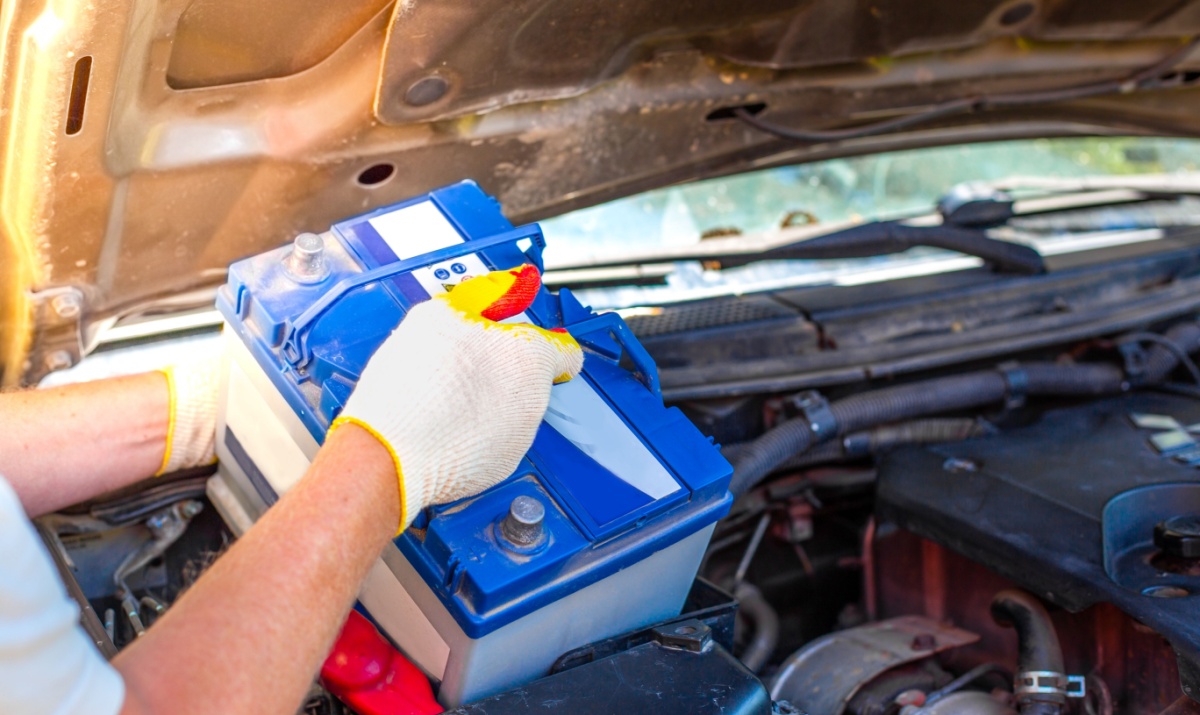By Mark Christen
I would like to draw a comparison between an automotive lead acid battery and a five-gallon bucket of water. Let us say that a brand-new battery is just like our bucket being full of water.
- When you crank the engine to start your car, it is like opening a large, maybe 1” or so water valve in the bottom of the bucket. It removes current from the battery rather quickly. Just as the 1” valve in the bucket drains the water from the bucket rather quickly.
- If the vehicle is not running and something such as the lights are left on, the battery will go dead after a short while. This would drain the current from the battery just like if a small stream of water was allowed to run out of our bucket. After a short time, the bucket goes empty, and the car fails to start.
- When the car is running, the alternator recharges the battery. It fills the battery with current slowly. Just like you are filling the bucket with slow stream from a garden hose. This means it takes some time to refill it.
- If the battery is found to be dead, the car will not start. In comparison, the bucket would be empty. No power in the battery, no water to drain out. Jump starting the vehicle would be like dumping a quart of water in the bucket. Now the water would run out of our 1” valve. (the car would start).
- If the vehicle is then driven a short distance, the alternator would be charging the battery, but as shown before this would be like a slow stream into the bucket from the garden hose. If the vehicle was then shut off and the battery was load tested, it would fail. This is normal as the battery was nowhere near fully charged and has very little reserve energy. Just like trying to drain a lot of water from our bucket. Since the bucket is almost empty you cannot drain much from it. If you charge it up slowly with a battery charger until it is fully charged it would be like a trickle of water going into the bucket. It takes a long time, but the bucket will get full, and the battery load test can be done.
- You can also use this comparison to explain what happens as the battery ages. As the battery ages the plates tend to sulfate. To compare, it would be like putting stones in our bucket. The car still starts just fine. (We can still open our 1” valve and water will run out quickly.) However, that stream won’t last as long due to the bucket not holding as much water because of the stones taking up some of the space in our bucket. The older the battery gets the more stones you put in the bucket. As the battery ages, if you leave the key on or the lights on (a small stream from our bucket) it does not take long, and the car will not start. (The bucket goes empty quickly.) It also does not take long to fill our bucket back up since there are many stones in it. Just like a sulfated battery does not take long to be fully charged.
- When we load test the battery, it is like opening the water valve from our bucket and seeing how long the stream of water continues until the bucket goes empty. An older battery will not last very long just as our bucket with many stones in it will go empty rather quickly.
- When the battery is exposed to very cold temperatures it behaves as if our bucket of water is partially frozen. We can still drain water from our bucket, but it may not drain as fast due to ice buildup. It may also tend to resist charging as again if the inlet valve is partially frozen it may restrict the charging process. Lastly, just like a battery if it is frozen solid it does not work just as our bucket will not drain any water due to it being completely frozen.
- A normal parasitic draw in our car due to computers etc. is just like a very small leak from our bucket. (a drip.) No matter how slow that drip is, eventually the bucket will go empty. (The battery will go dead) If the vehicle is started and operated for a few minutes it starts to fill the bucket with water, but it takes a while to do so. (Slow stream.) If the vehicle is commonly short tripped, the battery may never get fully charged. (The bucket never gets full) and when it is shut off the parasitic draw, (the drip) continues. At some point the battery gets too low to start the vehicle. (The bucket goes empty).
- Alternator output versus draw. The alternator is putting current into the battery when the car is running. Just as our garden hose is putting water in our bucket. The vehicles current use (everything consuming energy) is like water being drained from our bucket. If the alternator cannot keep up with the electrical load, the battery state of charge goes low (the bucket gets lower and lower) until it goes empty. Eventually, the battery goes dead and the car stalls.
- If a battery tender (maintainer) is attached to the battery when the car is not operated for an extended time, it will keep up to the parasitic draw and keep the battery at full charge. (Bucket stays full).

